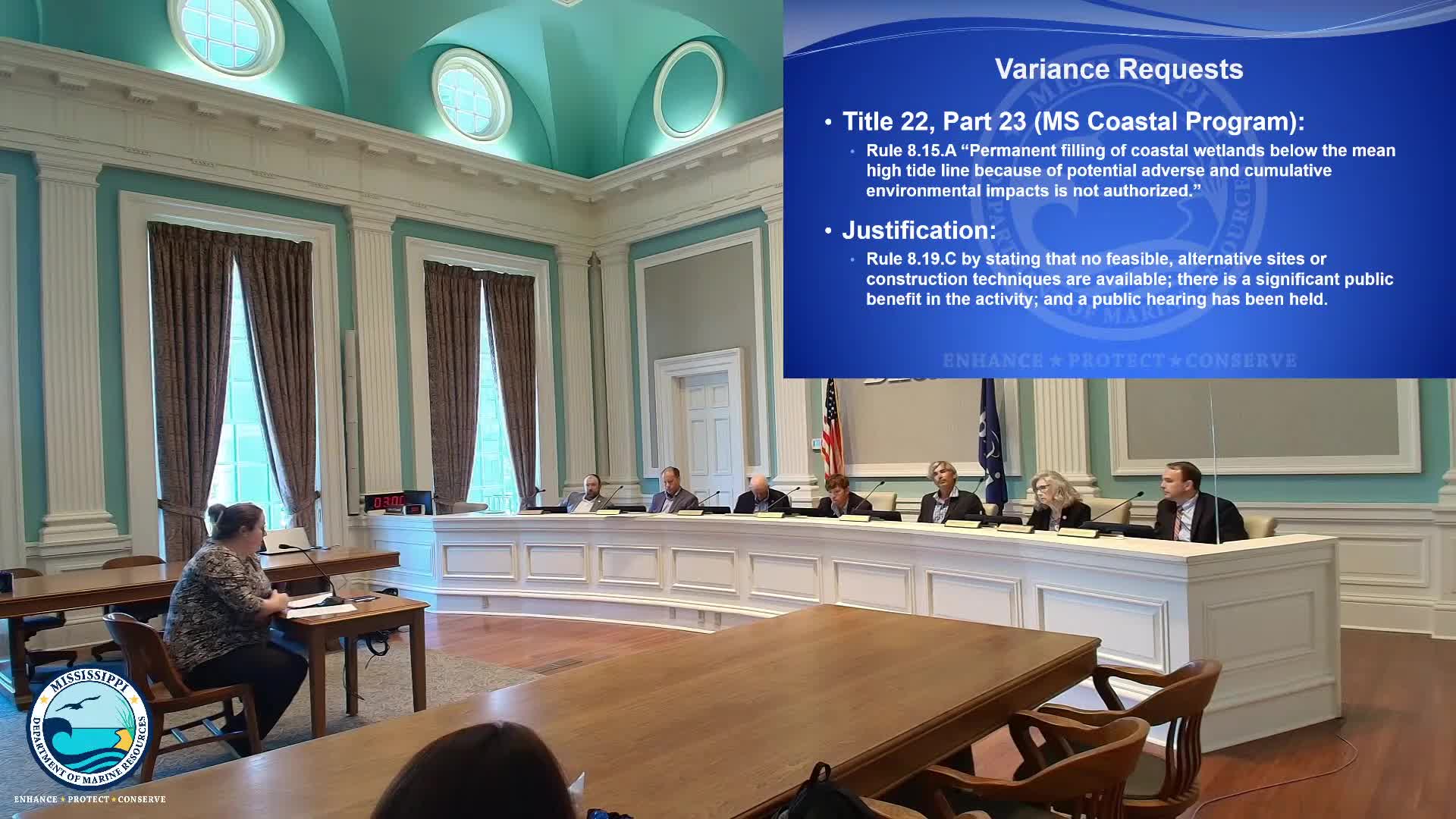County Grants Variance for Coastal Wetland Construction in Mississippi
August 20, 2025 | Department of Marine Resources, Agencies, Organizations, Executive, Mississippi
This article was created by AI summarizing key points discussed. AI makes mistakes, so for full details and context, please refer to the video of the full meeting. Please report any errors so we can fix them. Report an error »

In a recent meeting of the Mississippi Advisory Commission on Marine Resources, a significant discussion unfolded regarding a proposed variance to the Mississippi coastal program. The applicant, facing unavoidable impacts to coastal wetlands, has requested permission to fill below the mean high bridal line. This request has sparked a conversation about the balance between development and environmental preservation.
The county supporting the variance argued that there are no feasible alternative sites or construction techniques available. They emphasized the public benefit of the project, which aims to enhance local infrastructure while minimizing environmental disruption. A public hearing was held on July 24, where community members had the opportunity to voice their opinions. Notably, only one comment was received, and it was in favor of the project, indicating a level of community support.
To mitigate the impacts on the coastal wetlands, the applicant proposed a plan to remove and relocate approximately 10 square feet of impacted tidal marsh vegetation. This vegetation will be carefully spread over a 30 square foot area adjacent to the construction zone, allowing it to regrow naturally. This approach reflects an effort to preserve the ecological integrity of the area while accommodating necessary development.
The public notice for the project was published in The Sun Herald in July, and additional notifications were made available on the Mississippi Department of Marine Resources website. Despite the outreach, no public comments were received, aside from the supportive remark during the hearing. The Department of Environmental Quality (DEQ) also submitted no comments on the proposal, suggesting a consensus on the project's viability.
As the commission deliberates on this variance, the discussions highlight the ongoing challenge of balancing development needs with environmental stewardship in Mississippi's coastal regions. The outcome of this proposal could set a precedent for future projects, making it a pivotal moment for both local communities and the environment.
The county supporting the variance argued that there are no feasible alternative sites or construction techniques available. They emphasized the public benefit of the project, which aims to enhance local infrastructure while minimizing environmental disruption. A public hearing was held on July 24, where community members had the opportunity to voice their opinions. Notably, only one comment was received, and it was in favor of the project, indicating a level of community support.
To mitigate the impacts on the coastal wetlands, the applicant proposed a plan to remove and relocate approximately 10 square feet of impacted tidal marsh vegetation. This vegetation will be carefully spread over a 30 square foot area adjacent to the construction zone, allowing it to regrow naturally. This approach reflects an effort to preserve the ecological integrity of the area while accommodating necessary development.
The public notice for the project was published in The Sun Herald in July, and additional notifications were made available on the Mississippi Department of Marine Resources website. Despite the outreach, no public comments were received, aside from the supportive remark during the hearing. The Department of Environmental Quality (DEQ) also submitted no comments on the proposal, suggesting a consensus on the project's viability.
As the commission deliberates on this variance, the discussions highlight the ongoing challenge of balancing development needs with environmental stewardship in Mississippi's coastal regions. The outcome of this proposal could set a precedent for future projects, making it a pivotal moment for both local communities and the environment.
View full meeting
This article is based on a recent meeting—watch the full video and explore the complete transcript for deeper insights into the discussion.
View full meeting
